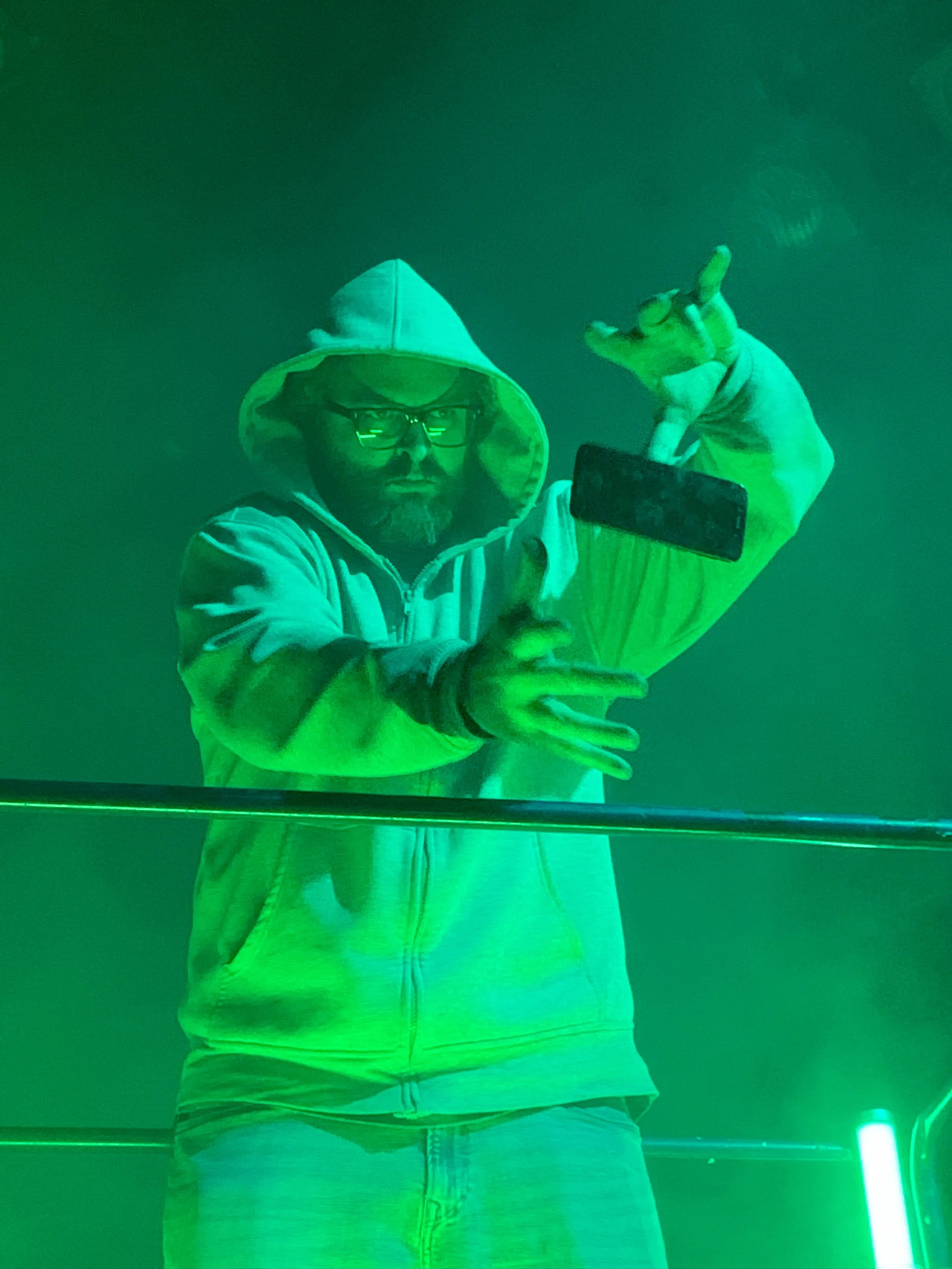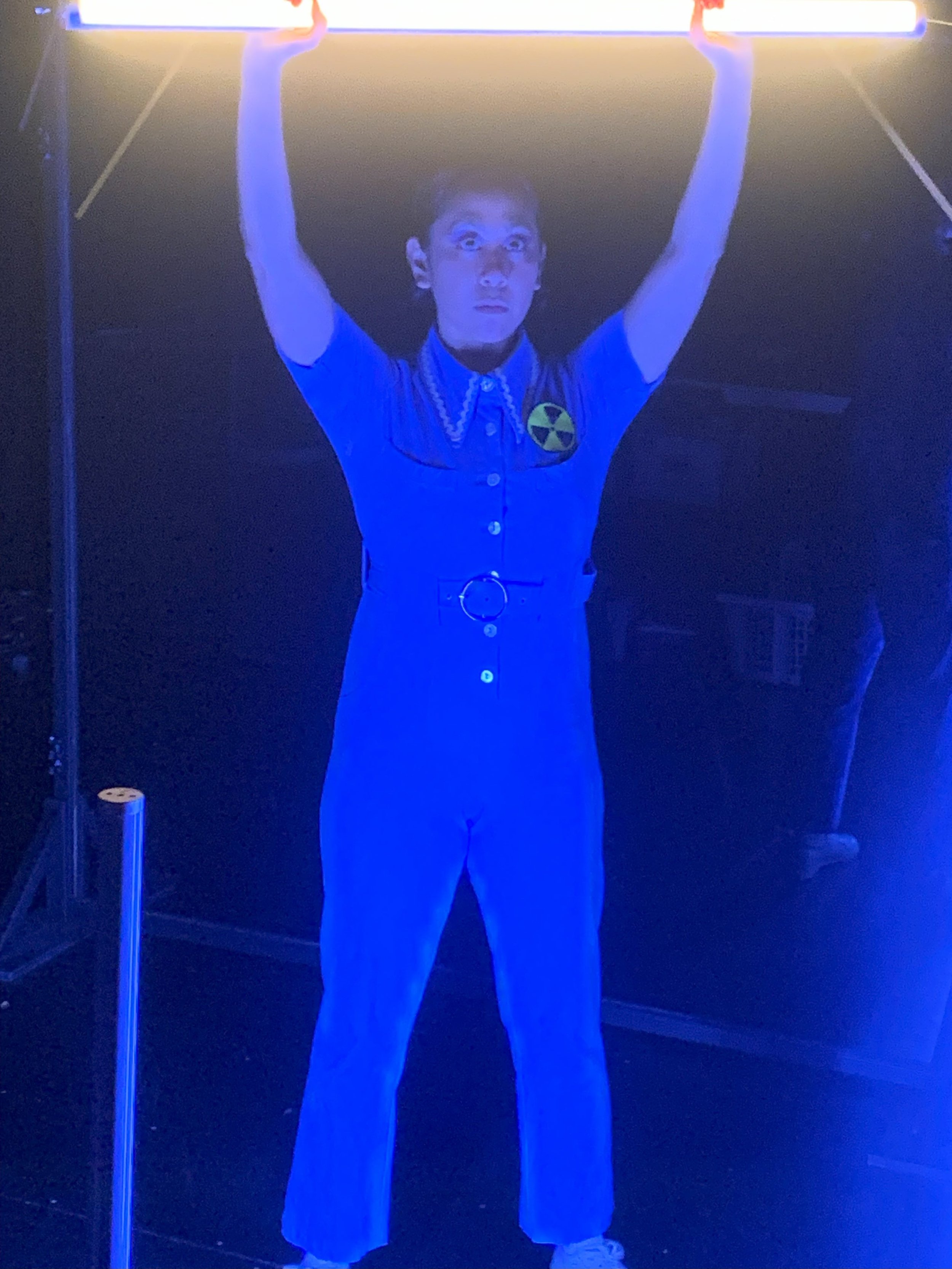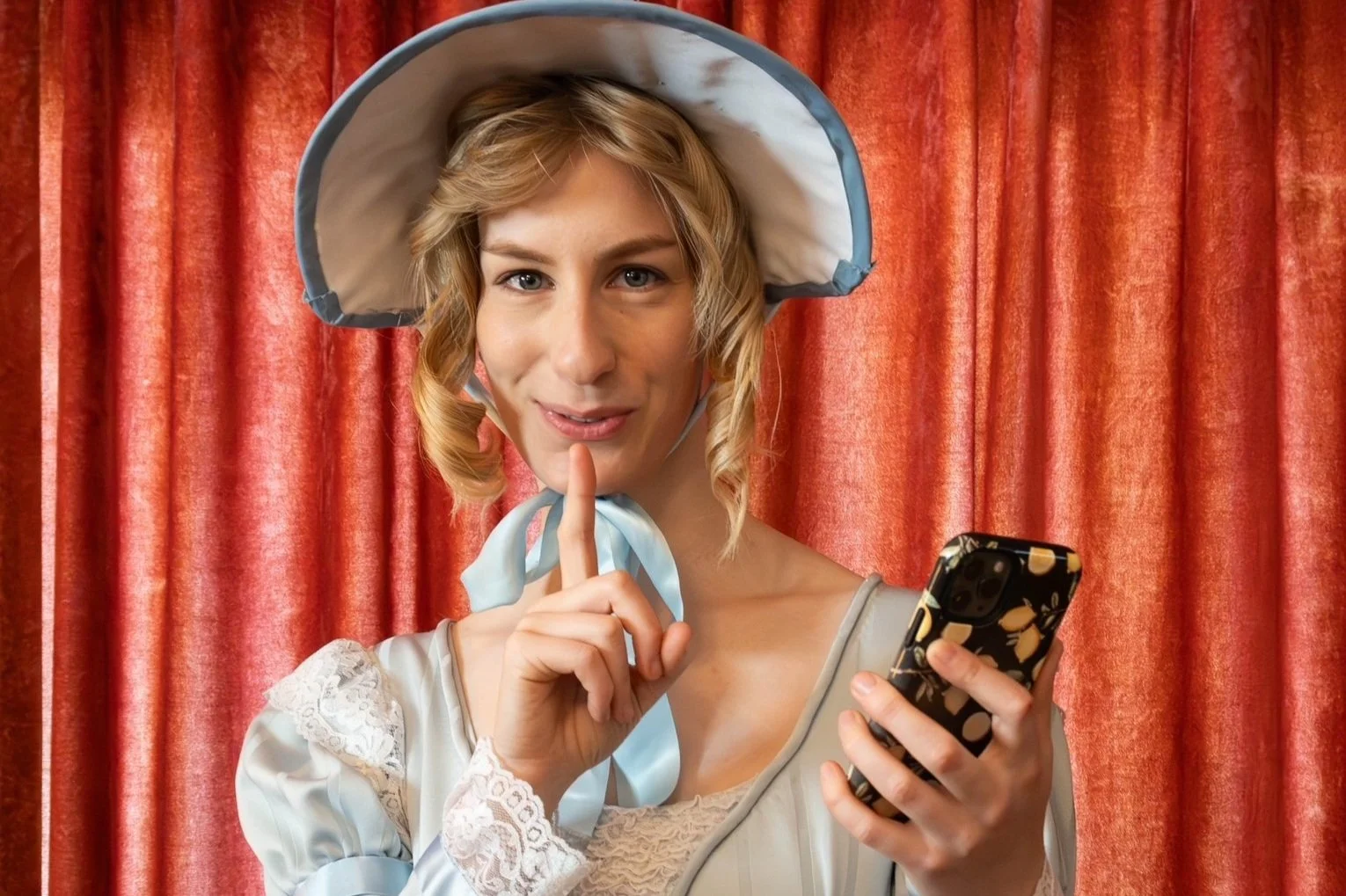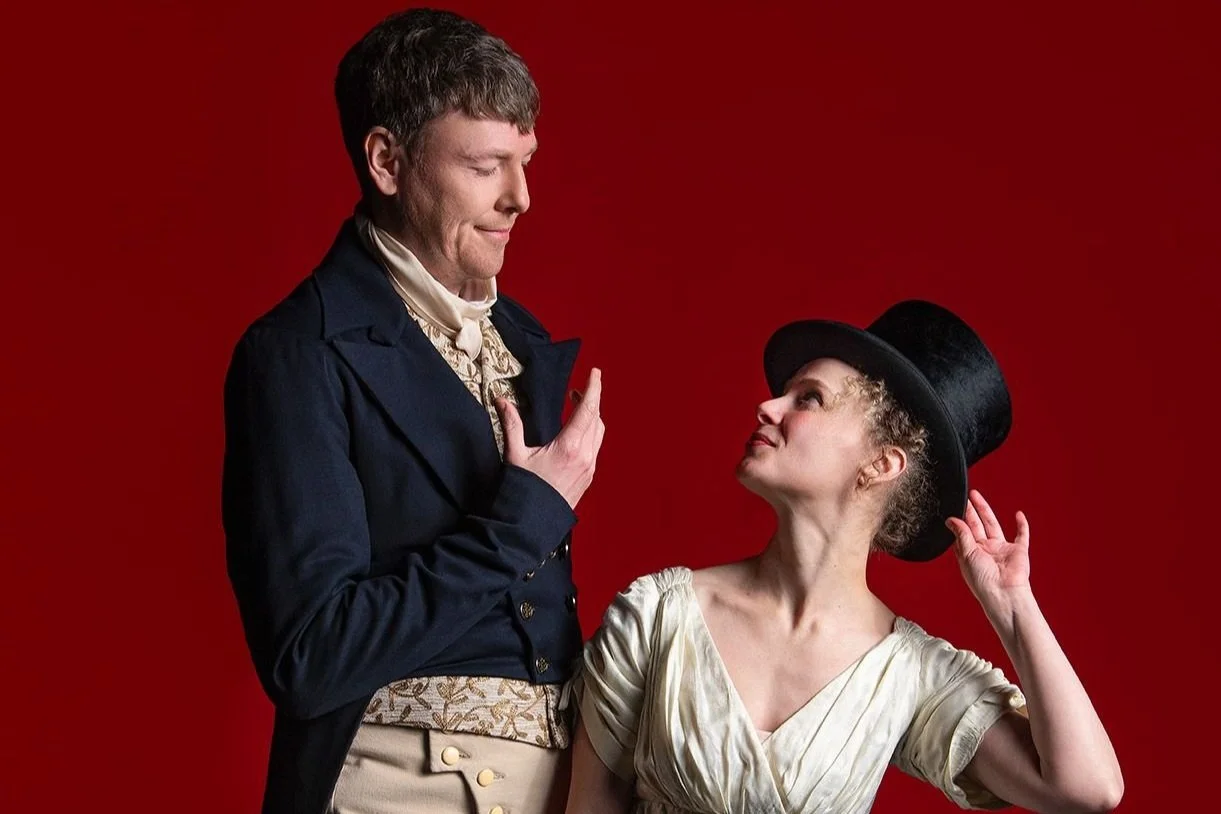DEAD DRONE's comedic take on technology and apocalypse is serious business
Combining live action, music, video, and puppetry, Upintheair Theatre offers a darkly funny vision of collapse that features strange insect hybrids and familiar human flaws
Darcey Johnson in DEAD DRONE. Photo by David Mott
Sarah Roa in DEAD DRONE. Photo by David Mott
Upintheair Theatre presents DEAD DRONE at the Russian Hall from April 11 to 19
NEARLY A DECADE AGO, Upintheair Theatre began exploring the world of speculative fiction as part of its creative focus. With DEAD DRONE, the theatre company’s cofounder and managing artistic director, David Mott, brings a new post-apocalyptic vision to the stage—one that feels both futuristic and eerily familiar.
On April 11, Upintheair Theatre presents the world premiere of DEAD DRONE, a dark comedy written by Mott and directed by Tamara McCarthy. Set in a future ravaged by environmental collapse, wildfires, and a pervasive “cloud sickness”, the play tackles timely themes with a clear awareness of the post-pandemic audience.
“The play is not about COVID-19, which is a really important thing to say, but it’s about what that did to humankind and our ability to connect as individuals, as lovers, as friends, as colleagues, and how it put us into a digital space of experience with different people,” says Mott in a Zoom call alongside lead actor Evelyn Chew. “A lot of it was prophetic, which was an odd thing for it to become. I was just on the internet, surfing news sites and watching what people were thinking on different platforms. I started to write the play, but it was a multi-pronged process, because it began as another show.”
DEAD DRONE evolved organically from two earlier projects. The character of Jenny, portrayed by Chew, originally came from Signals from the Lockdown, a play that examined human connection in an increasingly virtual world. The opening scene of DEAD DRONE was also initially commissioned as part of Rumble Theatre’s cabaret series, Untrue Stories Live. Once they realized both stories existed in the same speculative universe, Mott and McCarthy integrated the stories dramaturgically into the world of DEAD DRONE.
“The science fiction, it pops,” Chew says. “The discussions have gone into meta theatre, politics, religion, spirituality, government, romantic relationships, addiction. It’s been really fun to dissect it. There’s lots of layers to the story, but [David] also gives the artists lots of room to interpret the way we want to, or what’s most fun for us.”
Taking advantage of the intimate space and proximity to the audience, technology plays a crucial role in shaping the immersive theatrical experience. In particular, Mott highlights the innovation in puppetry designer Randi Edmundson’s work, inspired by Disney’s multi-plane animation technique. Through hidden microphones and live camera feeds, audiences can experience the world through the lens of its tech-dependent inhabitants, blurring the lines between reality, fiction, spectacle, and online influence.
“The play is a combination of live action, music, video projection, and live puppetry,” Mott explains. “[The characters] work in the world of meme. They work in the world of TikTok. They’re trying to come up with these great new images that are clickbait, so this is being witnessed live while you’re in the show.”
Perhaps in a moment of art imitating life, DEAD DRONE's exploration of art and technology stumbled upon a new wrinkle with a recent controversy surrounding its promotional imagery. Designed to intentionally mimic computer-generated aesthetics, the show's poster has been mistaken by some as being AI-generated, generating new discussions around authenticity and art.
“Our poster images have been receiving criticism that they were AI generated, which they were not, which is creating interesting conversations about the use of AI in art,” Mott explains. “The image was created using intentional stylistic choices to mimic computer-generated images, but we never thought the community would think it actually was! Wild…”
Despite its high-concept world—filled with bee-human hybrids and toxic pod zones—the show remains grounded in the struggles of its survivors as they navigate a hostile landscape. For Chew and the rest of the cast, humour naturally emerges, even in the face of weighty themes. As Mott aptly puts it, “Comedy is serious business.”
“I don’t think the characters are perfect,” Chew says. “[They] struggle with addiction and coping mechanisms and loneliness and isolation, and that’s all very human and relatable. It’s also very funny. I’m with lovely artists who are funny people and very honest. It comes out and it’s also in the text. It’s fun to not be perfect. I don’t know any perfect people myself.”
Since its inception in 1999, Upintheair has remained steadfast in its mission as an inclusive theatre company. After cofounder Daniel Martin’s departure as managing artistic producer in 2022, Mott’s leadership has naturally shifted toward guiding the artistic direction of the company while balancing operational responsibilities.
“I think what stayed the same has really been our commitment to our values as an organization,” Mott says. “Danny and I worked on those together for a really long time. We’re committed to integrity, hospitality, relevance, fun, collaboration, and opportunity, and I think that this show that we’re doing right now really exemplifies a lot of those things.”
As a show that confronts topical issues around technology and digital consumerism, DEAD DRONE also serves as a reminder of the importance of live theatre and community engagement. As part of Upintheair’s engagement efforts, talkbacks have been scheduled in the run of the show, including discussions with Elizabeth Elle, professor of biological sciences at Simon Fraser University, on the role of domesticated honeybees in our ecosystem.
“I would love if there was just more conversation about the need to see live performance and how it really serves our species, as opposed to just our culture,” Mott says. “We sat around fires and someone got up and did a dance, someone got up and told a story, and that’s where it comes from. It’s evolved, but live art is slowing being eroded by this fast-food version of art.” ![]()


























